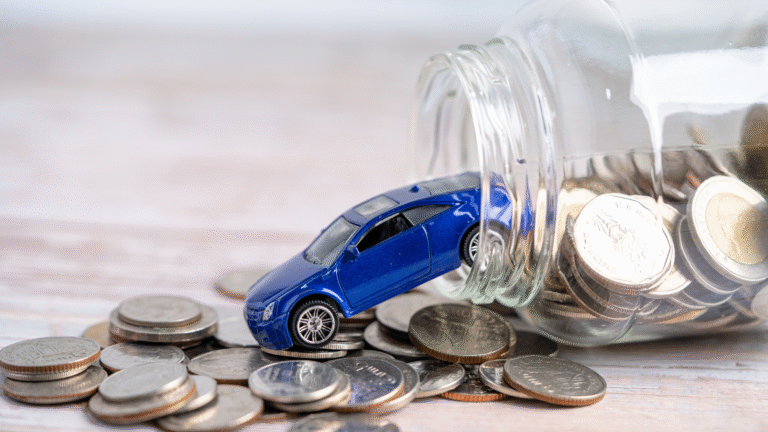As fuel prices fluctuate and environmental concerns mount, many Australians are weighing the long-term costs of electric vehicles (EVs) versus internal combustion engine (ICE) vehicles. But do EVs truly offer a cost advantage?
This guide provides a data-driven cost comparison for Australian drivers looking to make a smart, sustainable vehicle investment.
🪙 Primary Keyword: cost savings EVs vs. ICE vehicles
🔍 Secondary Keywords: electric vehicles Australia, EV running costs, EV ownership costs, ICE fuel expenses, EV government incentives
Table of Contents
- Running Costs: Fuel vs Electricity
- Maintenance and Servicing Differences
- Government Incentives and Tax Benefits
- Resale Value and Depreciation Trends
- Total Cost of Ownership: A 5-Year Breakdown
- FAQs
- Conclusion
1. Running Costs: Fuel vs Electricity
Petrol & Diesel Costs in Australia
As of 2025, average petrol prices in Australia hover around $2.10 per litre. A mid-sized ICE car that consumes 8L/100km costs approximately:
- 8L x $2.10 = $16.80 per 100 km
Driving 15,000 km/year = $2,520 annually in fuel.
EV Charging Costs
Electricity rates in Australia average around $0.30 per kWh. An average EV consumes 15–18 kWh per 100 km. That’s:
- 18 kWh x $0.30 = $5.40 per 100 km
Driving 15,000 km/year = $810 annually in electricity.
💡 Charging at home with solar? The cost can drop close to $0.
📊 Summary Table:
| Metric | ICE Vehicle | Electric Vehicle |
|---|---|---|
| Cost per 100 km | $16.80 | $5.40 |
| Annual Energy Cost* | ~$2,520 | ~$810 |
| Savings per Year | – | ~$1,710 |
(*Assumes 15,000 km/year)
2. Maintenance and Servicing Differences
ICE Vehicle Maintenance
Petrol and diesel engines have hundreds of moving parts. Regular oil changes, timing belts, spark plugs, and exhaust systems all need ongoing attention.
Average annual maintenance: $800–$1,200
EV Maintenance
EVs have fewer moving parts, no oil changes, and regenerative braking that reduces wear. Common EV service items:
- Tyre rotations
- Cabin air filter replacement
- Battery checks
Average annual maintenance: $300–$500
🔧 Long-Term Perspective:
- Brake pads on EVs last longer
- Fewer engine-related issues
- No gearbox or clutch failures
3. Government Incentives and Tax Benefits
Australian federal and state governments offer a range of incentives for EV buyers:
Federal Support
- Fringe Benefits Tax (FBT) exemption on eligible EVs under $89,332
- Luxury Car Tax (LCT) threshold increased for EVs
State-Level Incentives (As of 2025)
| State/Territory | EV Rebates | Registration Discounts |
|---|---|---|
| NSW | Up to $3,000 rebate | Reduced stamp duty |
| VIC | $100 registration discount | Up to $3,000 subsidy |
| QLD | $6,000 rebate (means tested) | Discounted rego |
| WA | $3,500 rebate | Standard rego |
💰 These incentives can reduce the upfront price difference significantly.
4. Resale Value and Depreciation Trends
ICE Depreciation
Traditional vehicles lose value steadily. After 5 years, most ICE cars retain about 40–50% of their value.
EV Depreciation
Historically, EVs depreciated faster due to battery concerns and limited market demand. However, that trend is changing:
- Strong demand for used EVs in 2024–2025
- Higher retention of value for brands like Tesla, Hyundai Ioniq 5, and BYD Atto 3
- EV resale prices now comparable to or better than ICE equivalents
⚠️ Battery health and warranty coverage are key resale factors.
5. Total Cost of Ownership: A 5-Year Breakdown
To illustrate the full picture, let’s compare a Toyota Corolla (ICE) and a BYD Atto 3 (EV) over 5 years.
| Cost Category | Toyota Corolla (ICE) | BYD Atto 3 (EV) |
|---|---|---|
| Purchase Price | $30,000 | $48,000 |
| Gov. Incentives | N/A | -$3,500 (WA rebate) |
| Fuel/Electricity | ~$12,600 | ~$4,050 |
| Maintenance | ~$5,000 | ~$2,000 |
| Registration/Tax | ~$5,000 | ~$4,000 |
| Resale Value (Est.) | $13,500 | $25,000 |
| 🟰 Net 5-Year Cost | $39,100 | $21,550 |
💡 Even with a higher upfront cost, the EV is ~$17,550 cheaper to own over 5 years.
FAQs
Q1: Are EVs cheaper to run than petrol cars in Australia?
Yes, EVs are significantly cheaper to run due to lower electricity prices and minimal maintenance.
Q2: How long does it take to break even on an EV purchase?
Most Australian EV buyers see cost parity or savings within 3–5 years, especially with government rebates.
Q3: Is charging infrastructure reliable across Australia?
Yes, EV charging networks like Chargefox, Evie, and Tesla Superchargers have expanded rapidly, particularly along major highways.
Q4: Do EV batteries degrade over time?
Yes, but modern EVs retain 80–90% battery capacity after 8–10 years. Most brands offer 8-year battery warranties.
Q5: Can I charge an EV with solar power at home?
Absolutely. Using rooftop solar can cut charging costs to near zero, making EVs even more economical.
Conclusion
Electric vehicles are not just eco-conscious—they’re wallet-friendly. With lower running costs, minimal maintenance, and growing resale value, EVs are quickly outpacing their ICE counterparts in total value.
Whether you’re buying your first EV or just exploring the switch, now is the time to consider the long-term financial and environmental benefits.
🚗 Ready to go electric? Compare models, explore incentives, and make the smart choice today.
Meta Description
Discover how electric vehicles compare to petrol cars in Australia with this in-depth cost savings analysis. Learn how EVs can save you thousands long-term.
